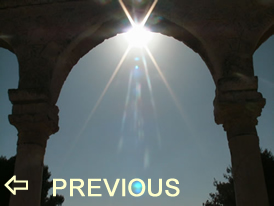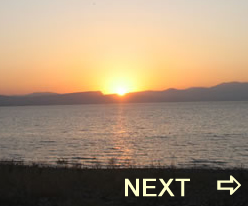|
|
|
 A Bible Teaching Ministry of Galyn Wiemers A Bible Teaching Ministry of Galyn Wiemers
|
|
|

|
| |

|
September 15 - Evening
"I will wait patiently for the day of calamity
to come on the nation invading us.
Though the fig tree does not bud and there are no grapes on the vines, though the olive crop fails and
the fields produce no food, though there are no sheep
in the pen and no cattle in the stalls, yet I will rejoice
in the Lord, I will be joyful in God my Savior."
- Habakkuk 3:17-18 |
 |
|
| Even with No Harvest, I will Rejoice in the Lord |
|
|
Habakkuk writes between the years 609-606 before the first Babylonian captivity in 605 when Daniel and his friends were taken to Babylon. God has just revealed to Habakkuk that the violent society
of Judah will be overrun by the even more violent Babylonians. (Jeremiah began saying these things 20 years before in 627). Habakkuk cannot turn the tide of judgment, which means his only option
is to “wait patiently” for Babylon's collapse which will be followed by the restoration of Judah
under the Persian leadership of Cyrus in 538.
But, between Habakkuk’s days (609-606) and the destruction of Jerusalem in 586 the land of Judah would be ravaged by a famine while the Jews continued to oppress the poor and pervert justice.
Then, from 586 when the Babylonians burnt Jerusalem and the Temple until seventy years later
in 516 when the returning Jews rebuilt the Temple there would be little or no production in the
land of Judah. This meant that beginning around the year 609 and continuing until the Jews
returned to the land there would basically be no productive or organized farming. During the
next 70-90 years while Judah was being punished by the Lord there would be:
- No harvesting fig trees
- No grapes on the vines
- No olive crop
- No production of food
- No sheep in the pen
- No cattle in the stalls
Since Habakkuk understood the Lord he could trust God and rejoice even if there were no figs, no grapes, no olives, no food, no sheep and no cattle. Because Habakkuk knew the Lord he could say:
“Yet I will rejoice in the Lord, I will be joyful in God my Savior.”
Habakkuk understood that the Lord was working his plan and that he would ultimately bring
history to a glorious conclusion. Habakkuk concludes his writing with the above confession of faith. |
|
 |
"The body of Benjamin Franklin, Printer, lies here, food for worms; but the
work shall not be lost, for
it will appear once more
in a new and more elegant edition, revised and
corrected by the Author."
– Benjamin Franklin
|
 |
| "The desire of love is to give. The desire of lust is to take." |
|
| |
 |
|
 |
Huperekperissou (Gr) - Immeasurably More (Eng) - Ephesisans 3:20 says, " Now to him
who is able to do immeasurably more than all we ask or imagine..." The phrase
"immeasurably more" is not just a compound word in the Koine Greek, but it is a
double compound word. The three words are Huper-Ek-Perissou. Huper (or, hyper)
means "over, beyond, above"; Ek means "out of; from" Perissos is the root word
meaning "over and above" or "more than enough." Paul would have communicated
his thought by merely using the root word Perissos to say, "Now to him who is
above to do OVER AND ABOVE all we ask..." But, instead Paul adds to
OVER AND ABOVE the words huper and ek to add the meaning
BEYOND-FROM to OVER AND ABOVE. This way Paul wrote,
"Now to him who is able to do BEYOND-OVER AND ABOVE all we ask or imagine." |
|
In 2 Kings 25:27-30
Jehoiachin is released
from a 36 year prison term
on March 22, 561.
A Babylonian cuneiform
tablet mentions Jehoiachin after his release and
list the provisions of food supplied to him and
his sons (ANET 308) |
| |
|
|
 |
|
 |
Do I praise God only when things turn out the way I planned?
Today I will praise God when something doesn't go my way because He is still God my Savior. |
|
"A hot-tempered person stirs up conflict, but the one who is patient calms a quarrel."
- Proverbs 1:20 |
| |
|
|
|
|
| |
|
 |
 |
 |
 |
| Parents |
Boldness in the
face of opposition |
Crime |
New Caledonia - Bible translation |
|
|
| |
|
|
| |
| |
| |
| Reps & Sets is a daily Bible devotional for Christians from Generation Word Bible Teaching used each morning and evening. |
| |
|
|